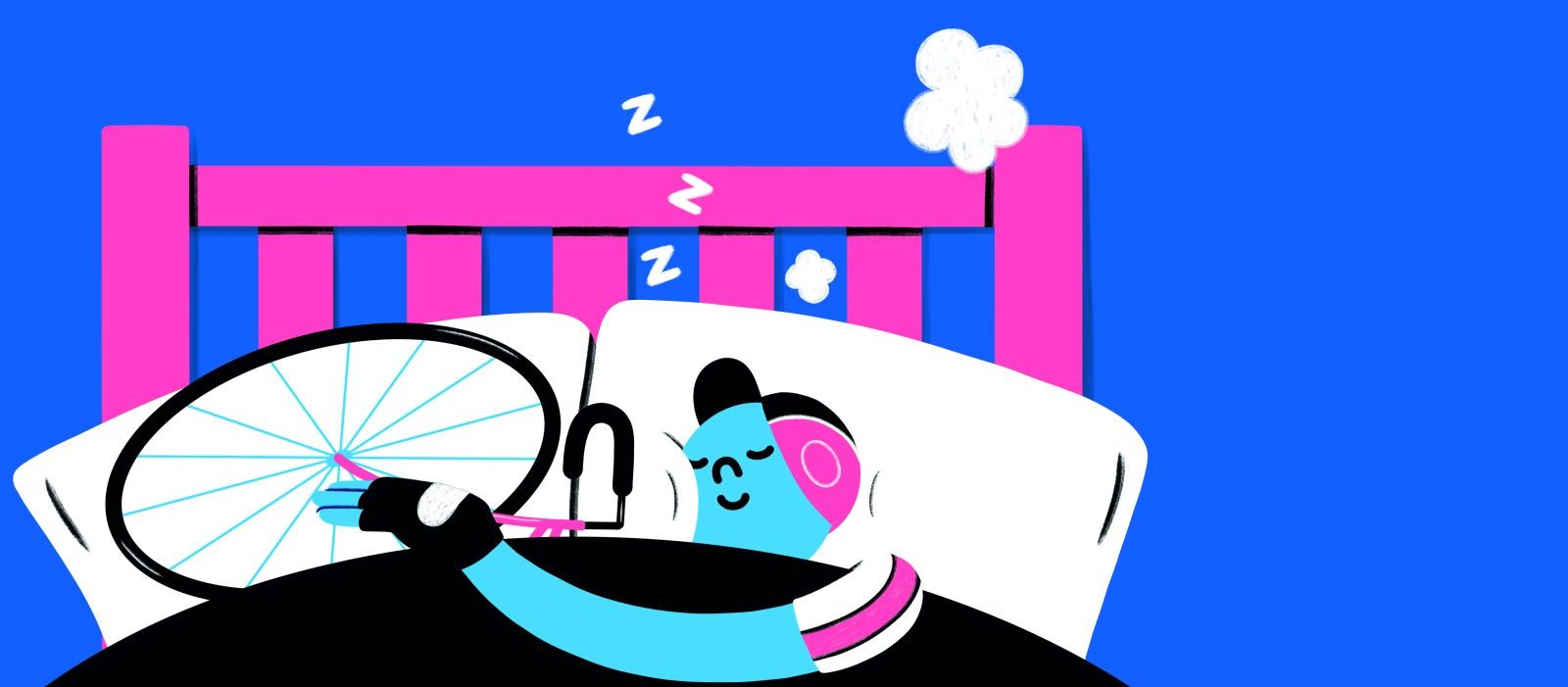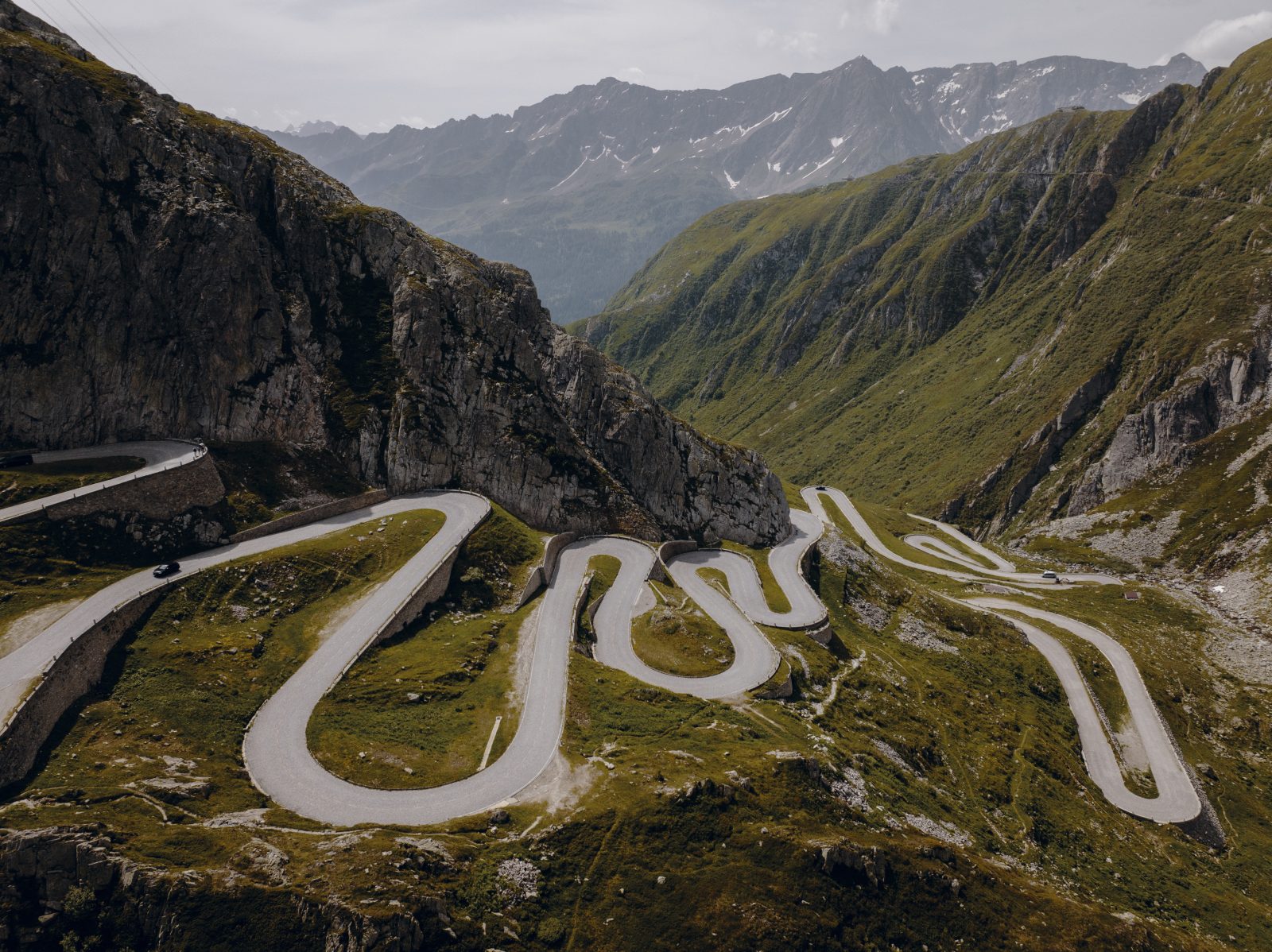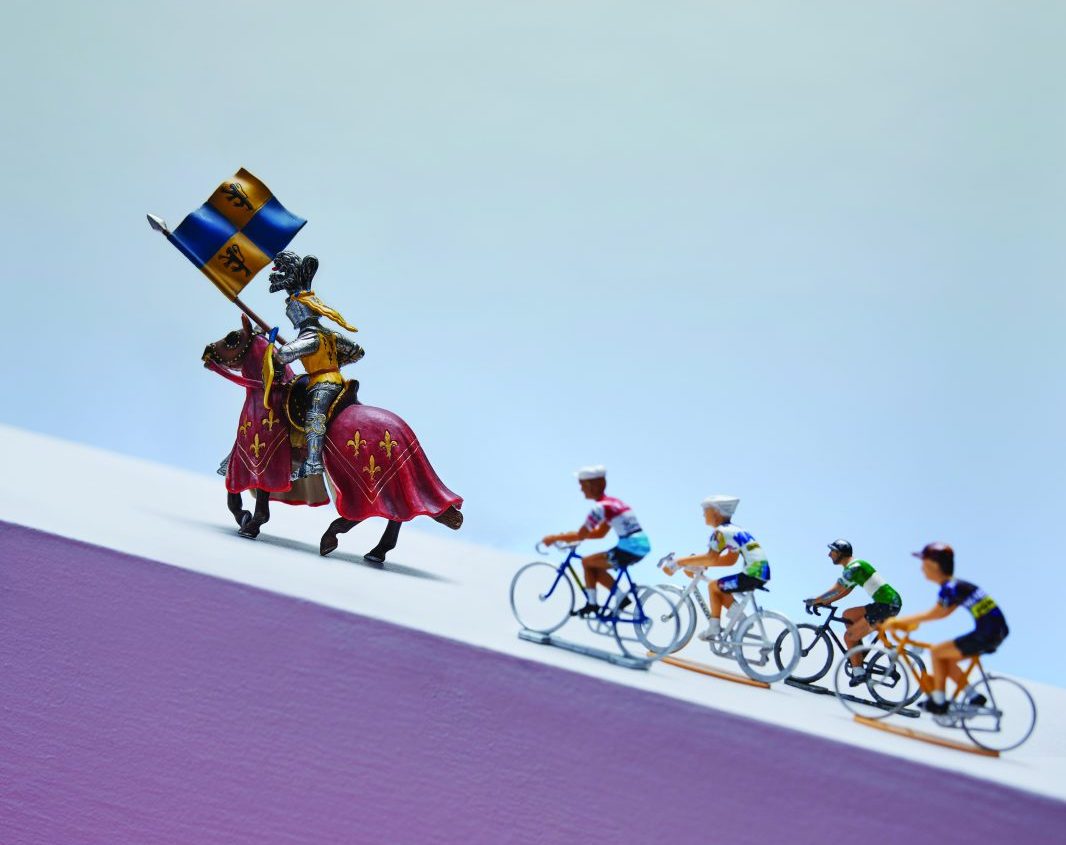Good cop, bad cop. The Italian double act of the Passo del Mortirolo and Passo di Gavia dishes out pain and pleasure in equal measure.
Words Laurence Kilpatrick Photography Juan Trujillo Andrades
Perched at the neck of the Valtellina valley in Lombardy, and flanked on all sides by brooding mountains, lies the medieval Alpine town of Bormio. It is the gateway to some of the world’s finest and hardest cycling climbs, with the Passo dello Stelvio to the north and, to the south, a pair of passes that have become legendary thanks to their association with the Giro d’Italia: the Mortirolo and Gavia. These climbs have featured in Italy’s Grand Tour on numerous occasions, and have garnered notoriety in the pro peloton, having seen their share of heartbreak and heroics.
What goes down
As we roll out of town, it’s a glorious summer morning with a freshness in the air. My ride companion for the day is Daniele Schena, owner of Cycling Hotel Funivia, our resting place for the trip. Having climbed the passes of the region 500 times more than I’ve climbed Box Hill, he has earned the moniker ‘Stelvio Man’ and is perfectly placed to show me the ropes. What is less than ideal is the 30km of chilly descent at the start of the ride, winding alongside the river Adda.
Sleepy villages whizz by, but the deep shadows cast by the 3,000m-high Cima del Corno di San Colombano stand as a moody reminder of what’s to come.
Depending on who you believe, the Mortirolo’s name stems from either an alleged mass pagan slaughter by Charlemagne in AD773, or the word ‘mortarium’, which refers to the summit’s topography. It was also the scene of some major battles between the Italian resistance and the Nazis in early 1945.
Speaking of scraps, the first inclusion of the frighteningly steep Mortirolo in 1990 by Giro planners prompted something of a sadistic arms race with its rival Grand Tour in Spain. The Vuelta a España responded in 1999 with the heinous Alto de l’Angliru, only for the Giro to fire straight back in 2003 with the equally punishing Zoncolan. It’s a war that rages to this day.
From the western side, there are many ways to skin the Mortirolo cat, and we could choose any number of spindly roads that would take us towards its summit. Daniele directs us to the climb that starts in the village of Mazzo di Valtellina, the route most regularly used by the Giro. I’d like to believe that this approach is popular with the organisers because it’s the most manageable, but Daniele informs me the main reason the race ascends from this side is that it is deemed too steep and dangerous to descend.
In Mazzo, we stop outside the Chiesa di Santo Stefano and drop into Caffetteria L’alba for our pre-climb coffee. Daniele attempts to amend my order to an espresso, but I dig in my Anglo-Saxon heels for a black Americano and a pastry, and sip away slowly, stretching out the time before I have to face the mountain.
Steep learning curve
It’s disarming when a climb’s legend doesn’t match its appearance. Roll up to the start of the Galibier or Hardknott Pass and it’s clear what’s coming – the full extent of their horror and magnificence is there to see in front of you. In contrast, the beginning of the Mortirolo is a sad sliver of tarmac curling away into damp forest.
Once on the road, we’re the only ones here. I feel like checking my receipt: one Mortirolo, please. It’s hard to believe we’re standing on the threshold of one of cycling’s most fearsome mountains. I will quickly learn that the Mortirolo doesn’t stand on ceremony.
The first 3km averages 9.8%, and despite being a rider who prefers to plonk himself in the saddle wherever possible, I’m up and dancing like a reluctant circus bear well before time. Freshness has given way to thick humidity. It’s not yet 10am, but my chin is soon funnelling a steady stream of sweat onto the top tube.
I’d love to say that Daniele is in similarly dire straits, but I can’t. The sight of his flexing calves, easily mistakable for local pine, and the bobbing insignia of ‘Stelvio Man’ on his golden jersey become increasingly familiar – and further away – as the climb goes on. In fairness, this mountain is basically on his paper round.
The difficulty with the Mortirolo is not just its gradients (kilometre five averages 13.3%) but its refusal to cede any aesthetic dividends in exchange for the pain. Wooded bends give way to more wooded bends, and the occasional punctuation mark of a castle or a church feels like a meagre rounding error.
That feeling changes a little when we haul ourselves around a switchback about 8km into the climb to find the 2006 monument to Marco Pantani. He’s a long way from the sea, but The Pirate is still on watch, his oxidised green form grinding through the gears on rusted, abstract wheels, head peering round to take in the carnage in his wake. Such is Pantani’s legend on this climb – thanks to his blistering win here in 1994 – that the first rider to crest the Mortirolo when it features in the Giro these days receives the Cima Pantani award. Daniele edges me out today.
The incline in the final 2km drops to a paltry 8.5%, and at last, the climbing that seemed like it would never end is almost over. Now that we’re out of the trees, views open up over the valley below, and the sun beats down with renewed vigour.
The summit is a modest affair, mirroring the innocuous start to this monstrous ascent. Recently added to the two engraved granite stones is a repurposed shipping container that, on a wet day, must provide welcome shelter and respite. It’s perhaps fitting that an empty metal box is the Mortirolo’s idea of comfortable relief.
We don’t wait around. Instead, we tip over the edge into the vertiginous 9km descent that will take us to the village of Monno and the start of our next climb.
Life after death
The signs don’t tell us we are on the Gavia ‘proper’ until Ponte di Legno, but we’ve been climbing steadily since we left Monno 17km ago, and there is still 19km to go to the summit.
After a quick panini, a full-fat Coke, and an Americano (resolutely not an espresso) in Ponte di Legno, we head north following the Frigidolfo river, well aware that the shallow gradients we’ve enjoyed up to now are about to evaporate into the Lombardian heat.
Historically, the Gavia is more typically associated with extreme cold. Stages of the Giro are often forced to circumvent the climb and its 2,622m summit for rider safety. Although famously, this was not the case in 1988 when American rider Andy Hampsten did his best impression of Narnia’s Snow Queen, rising up through the storm, collecting layers of snow as he went, and braving a freezing, treacherous descent to put himself into pink.
For now, I’m so hot that some snow would be lovely. It’s not until we’ve completed six switchbacks and around half of the climb that we emerge from the trees, and the Alpine scenery rears up around us. And this is when I begin to comprehend the Gavia’s real majesty. Where the Mortirolo kept us shrouded in the gloom as it dished out punishment, the Gavia offers up a feast of lush forest and jagged peaks. It’s a climb of plenty.
From the 10km mark, we embark on 4km of predominantly straight road with most of the worst gradients behind us. Sustained double-digit averages are a thing of the all-too-recent past, at least until the final couple of kilometres, and with an overall average of under 8%, it’s delightful riding. I settle into a good rhythm and resist the urge to chase down the occasional ibex that I spot scuttling up sheer rock faces.
Around 3km from the summit, we enter a tunnel whose frigid air provides a much-appreciated jolt to my core temperature. Once we exit and blink into the bright warmth again, we’re met with an uninterrupted expanse of mountain range. Perched above the snow and cloud is what Daniele informs me is the Punta di Pietra Rossa, a 3,283m colossus. Perhaps it’s a stretch to say that the end is coming too soon, but the views of marbled rock, snow, forest, and stream are as breathtaking as anything I’ve seen in the Alps.
Some pay off
The upper regions of the Gavia Pass are home to two murky, myth-laden lakes, Lago Nero and Lago Bianco, the first of which appears to the left before the climb’s concluding hairpins. I don’t have the energy to ascertain whether the lakes are full of ancient tears shed by two lost Italian children, but whatever the provenance, its inky waters look mighty pretty.
Daniele catches my eye, and a subtle upward nod reminds me that we still have three steep switchbacks before we arrive at the scree-littered summit. The road carves through the clouds and cuts into a scrubby natural amphitheatre where the outline of the Rifugio Bonetta beckons to me. The gradient hits 12% in places, but after the unrelenting punishment meted out by the Mortirolo, the Gavia seems like a beneficent despot in comparison. I get out of the saddle one last time and give the sun-worshipping cafe patrons something to cheer as I crest the climb at a decent clip.
In the Rifugio, Daniele gives me a tour of the jerseys and memorials lining the walls, offering some insight into the Giro legend I’ve just climbed. Before we make our way down the mountain, he reminds me of perhaps the most famous descent of the Gavia, that of Dutchman Johan van der Velde, the first rider to summit during a snow-bound stage in 1988. With barely a scrap of insulation on him, he stopped descending and actually began going back up the climb on foot, ruining his chances of winning the stage but desperate to find some warm clothing.
Today’s temperatures mean our return to Bormio will be less fraught with danger. But the thought of racing up either of these climbs is enough to send a shiver down my spine.
Passo del Mortirolo
One of the Giro’s most fearsome climbs.

While the easier eastern side from Monno was used in this year’s Giro d’Italia – on a stage won by a promising young Slovenian rider called Tadej Pogačar – the climb from Mazzo di Valtellina is considered the most iconic thanks to its more punishing gradients and the Marco Pantani connection. While il Pirata famously won there in 1994, leapfrogging Miguel Induráin en route, in 1999 around 200,000 tifosis taking out the mountain in expectation of his arrival were left devastated when their hero was ejected from the race for failing a haematocrit test. Overall, the Mortirolo has featured 16 times in the Giro d’Italia, including a brutal alternative route on Stage 20 of the 2012 edition. Starting from Tovo di Sant’Agata – slightly further down the valley – this route ascended at a fiendish 11.6% for 7.5km.
Passo di Gavia
Tormenting pros for over half a century.

The Passo di Gavia – a climb almost as famous for giving race organisers headaches as riders legaches – celebrated its 60th Giro birthday in 2020. Peaking at 2,652m, the Gavia is only 108m shy of its close neighbour the Stelvio, and in the month of May, it isn’t always the best place for racing bikes. As well as numerous cancellations, circumnavigations, and Andy Hampsten’s famous blizzard ascent in 1988, the Giro peloton most recently climbed the Gavia in 2014 during Stage 16. Even then, the weather prompted many to call for the stage to be cancelled, but ride they did, with a 24-year-old Nairo Quintana – at that point becoming one of the world’s best climbers – winning the stage and catapulting himself into a pink jersey he would not relinquish.
The rider’s ride
Trek Émonda SL7, $8,500, trek.com
The Émonda is Trek’s climbing bike (or at least it was before it was killed off by the new super-light Madone) and that was exactly what was required for a ride where flat road was in very short supply. However, at around 7.8kg for this SL7 version, it could’ve done with being a bit skinnier on some of the Mortirolo’s worst inclines. Still, I can’t blame the bike too much. It was stiff enough to put up with me hauling on the bars, the Bontrager Aeolus Elite 35 wheels were the perfect depth for keeping me planted on the long valley descents, and Shimano’s 105 Di2 took care of shifting duties admirably, with the biggest 32t sprocket seeing plenty of use.
The frame’s stiffness didn’t feel hugely forgiving on some of the ropier bits of freeze-thawed road surface, and given the choice, I would have opted for something bigger than the supplied 25mm tyres, which felt on the skinny side for a punishing day in the mountains.
Hell and high water
The ride starts in Bormio and heads south along the river Adda to Mazzo di Valtellina where the climb to Passo del Mortirolo begins. Once over the summit, the road leads down to Monno before heading northeast alongside the river Oglio. At Ponte di Legno – a good place for some refreshment – the route turns north towards the Passo di Gavia via its summit lakes. The descent ends up back in Bormio.

By the numbers
Just the stats, ma’am
111 Distance of ride in kilometres
3,190 Total ascent in metres
0 Number of espressos ordered by Cyclist
50+ Number of times Stelvio Man has climbed the Mortirolo
3 Ibexes seen climbing near-vertical walls
2 Number of lakes supposedly filled with tears
6 Kilometres of the Mortirolo that are 11% or steep
How we did it
Travel
Flights from Australia to Milan go via Dubai, Doha, Bangkok, Singapore, Hong Kong, to name a few. Most flights arrive at Milan Malpensa Airport, from which it’s a 216km drive to Bormio.
Accommodation
We stayed at Hotel Funivia (hotelfunivia.it) in Bormio, which is ideal for cyclists as it has a dedicated garage and workspace underneath the reception boasting every tool you can shake a cassette at. Daniele Schena, our guide for the trip, runs bike tours from the hotel and will provide riders with packed lunches and laundry service. Located by the river Adda and just a short walk from the medieval town centre and charming main piazza, the Hotel Funivia offers double rooms from €200 ($327) per night.
Thanks
Many thanks to Daniele, aka Stelvio Man, for planning the route; Danilo Compagnoni for arranging the hire bike from Bormio Ski & Bike (bormioskibike.com); and to the thoroughly reliable George Thoen, who provided transport for our photographer. Thanks also to Francesca Carniglia and Veronica Mazzola, who were very proactive in arranging every element of the trip. We enjoyed some great food and welcoming service at Osteria la Bajona (bajona.it) and The Steak House Bormio (steakhousebormio.it) as well as Hotel Funivia’s own restaurant. For more information, go to bormio.eu.


